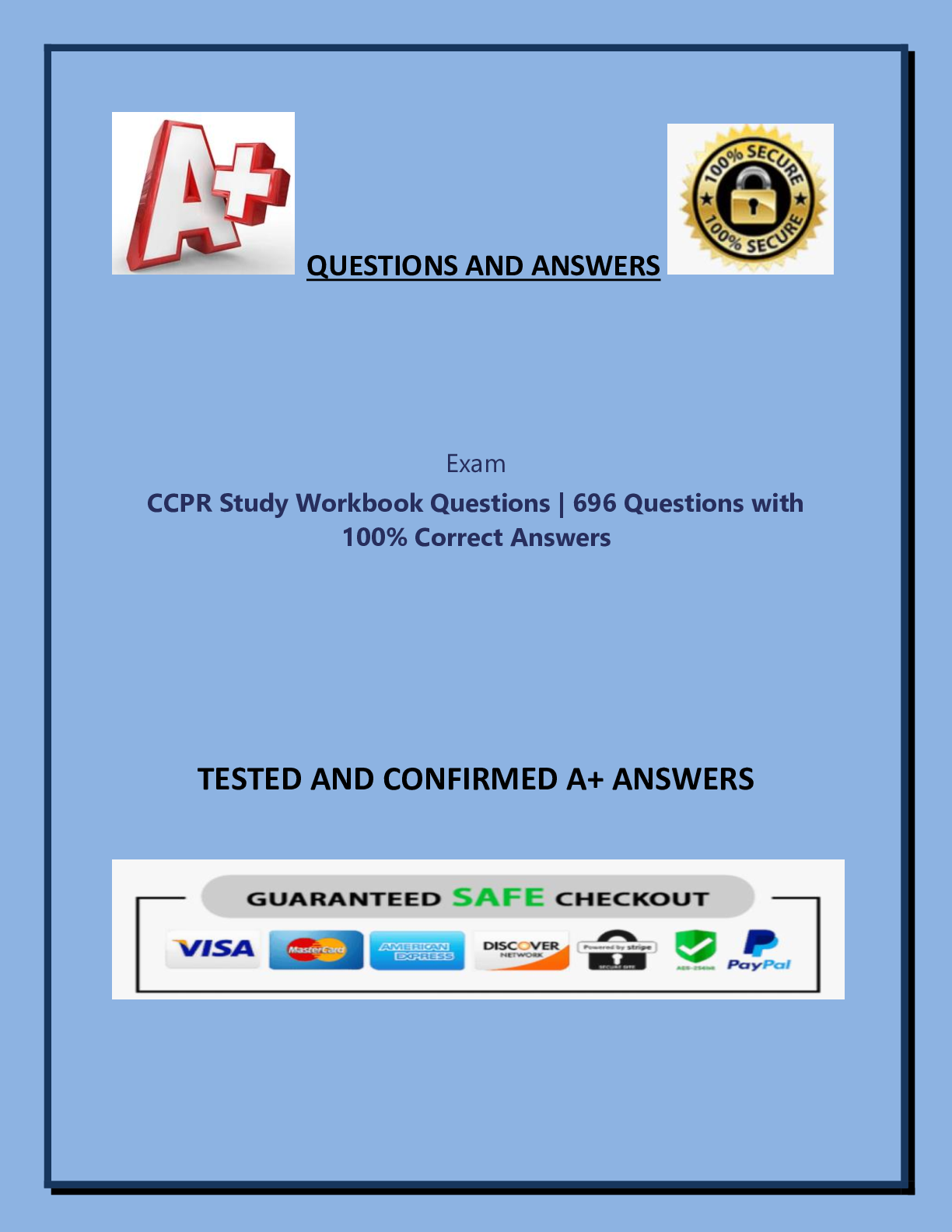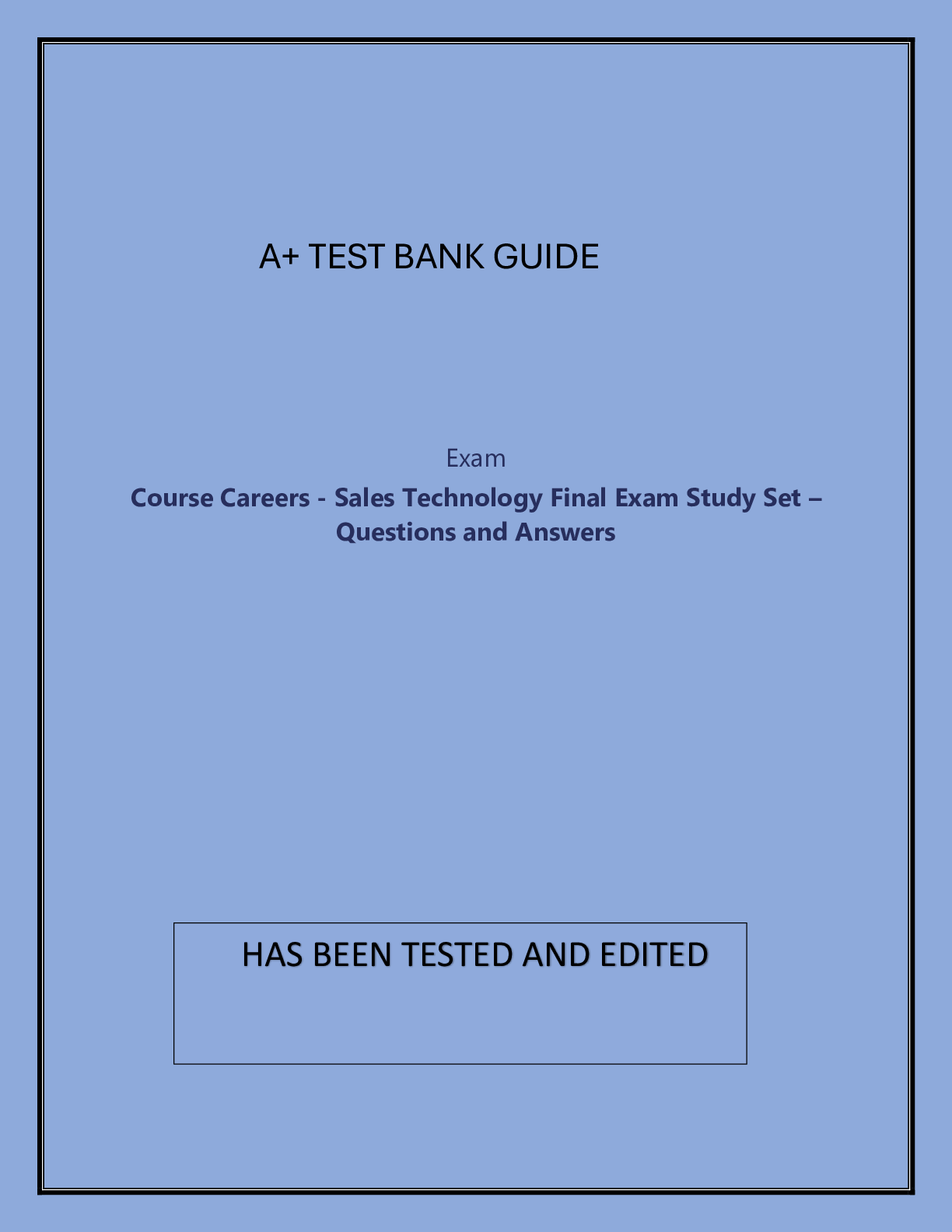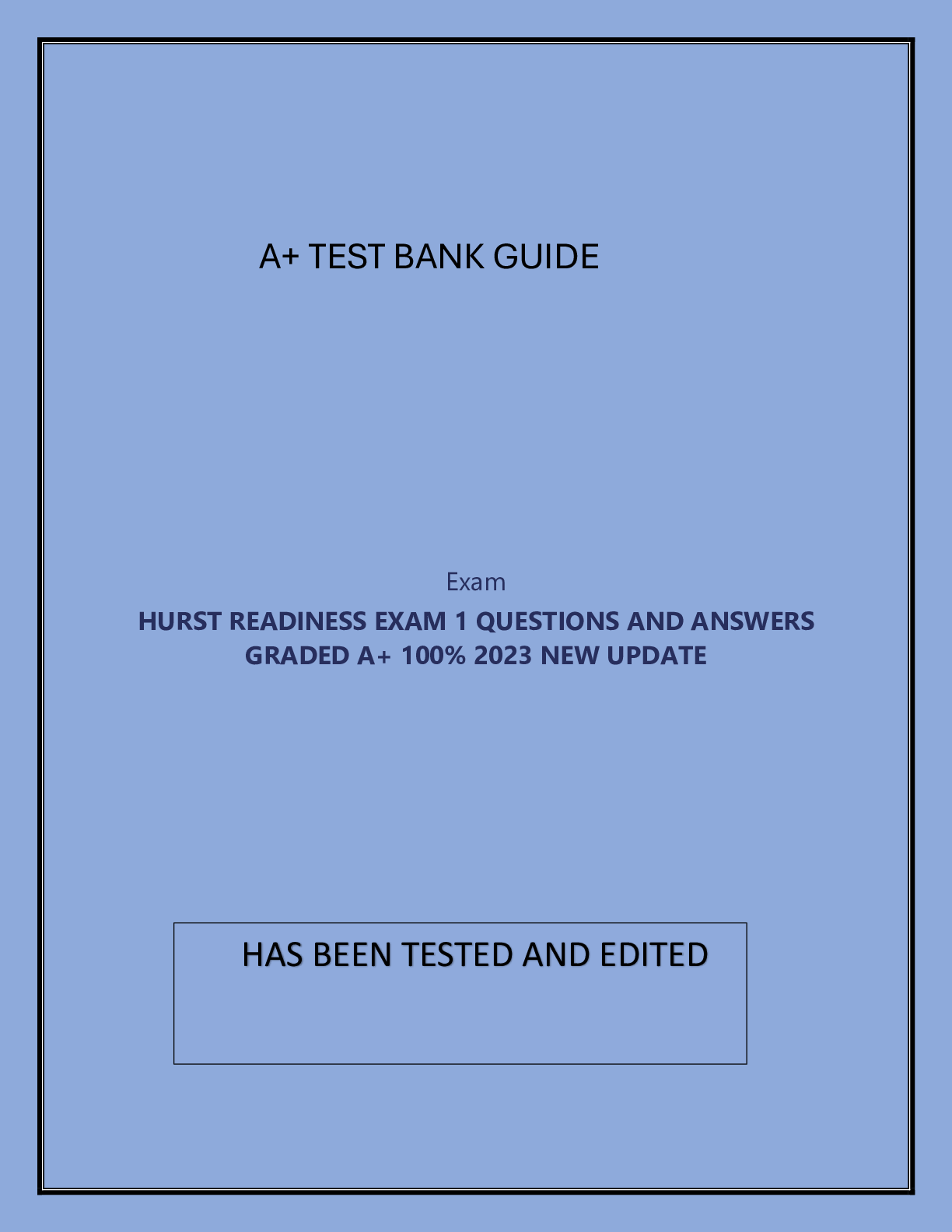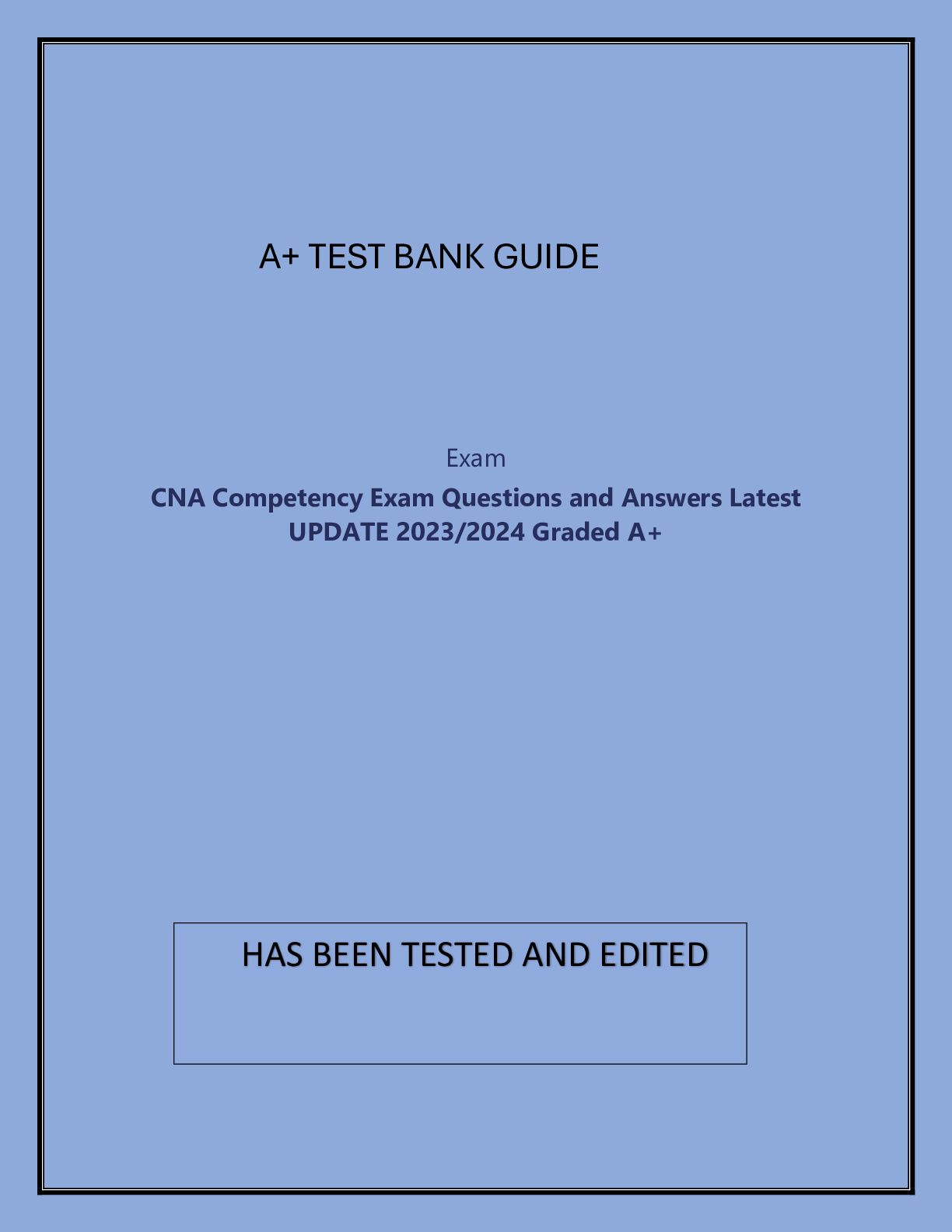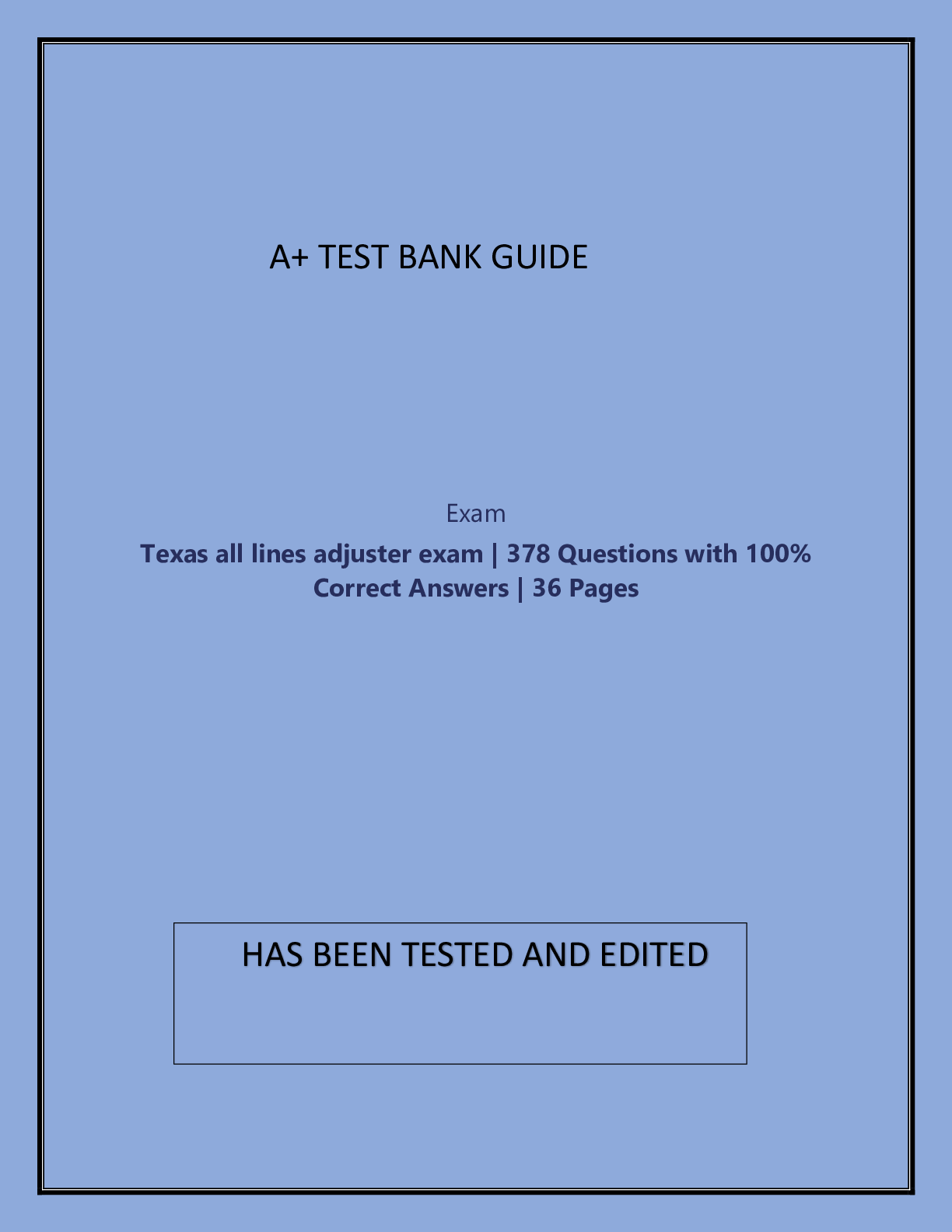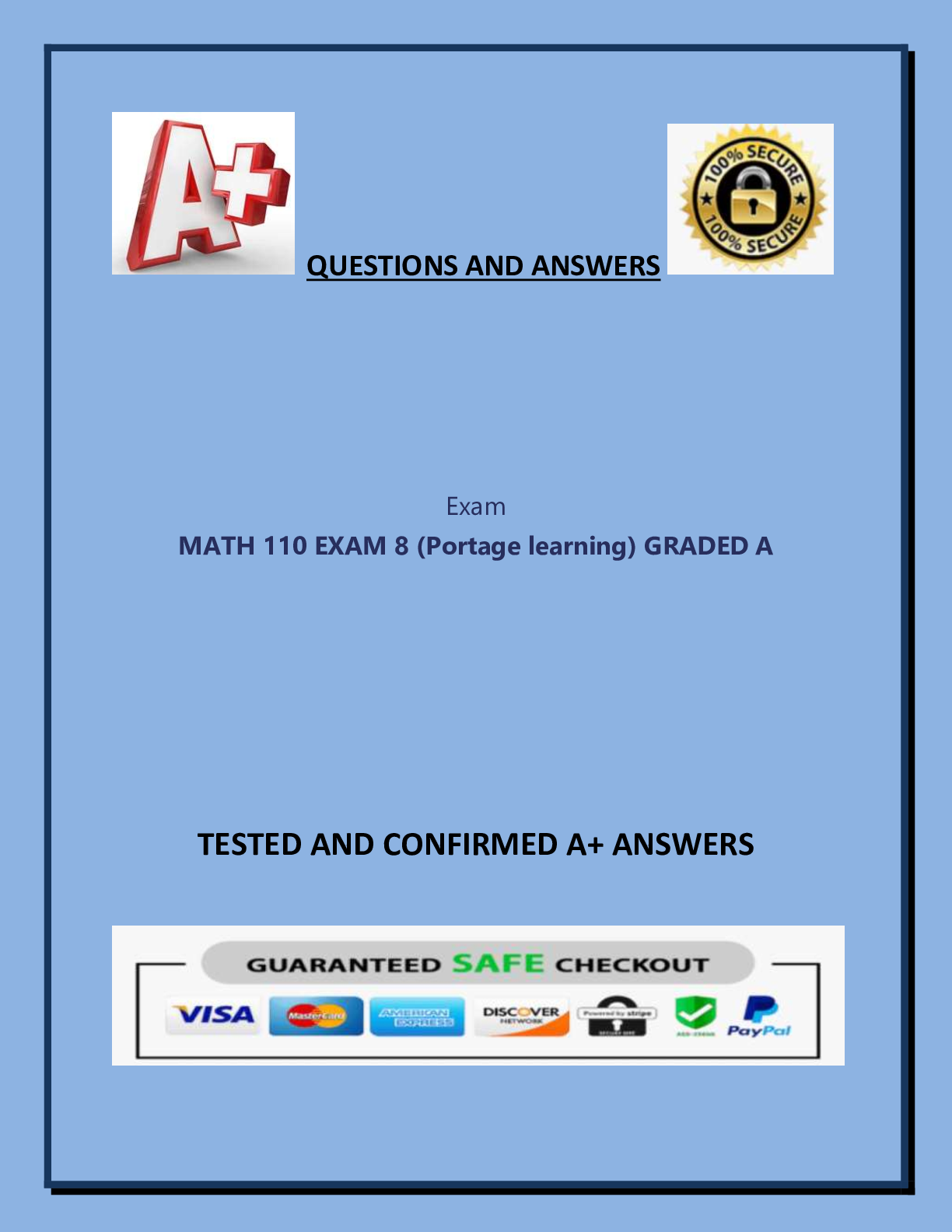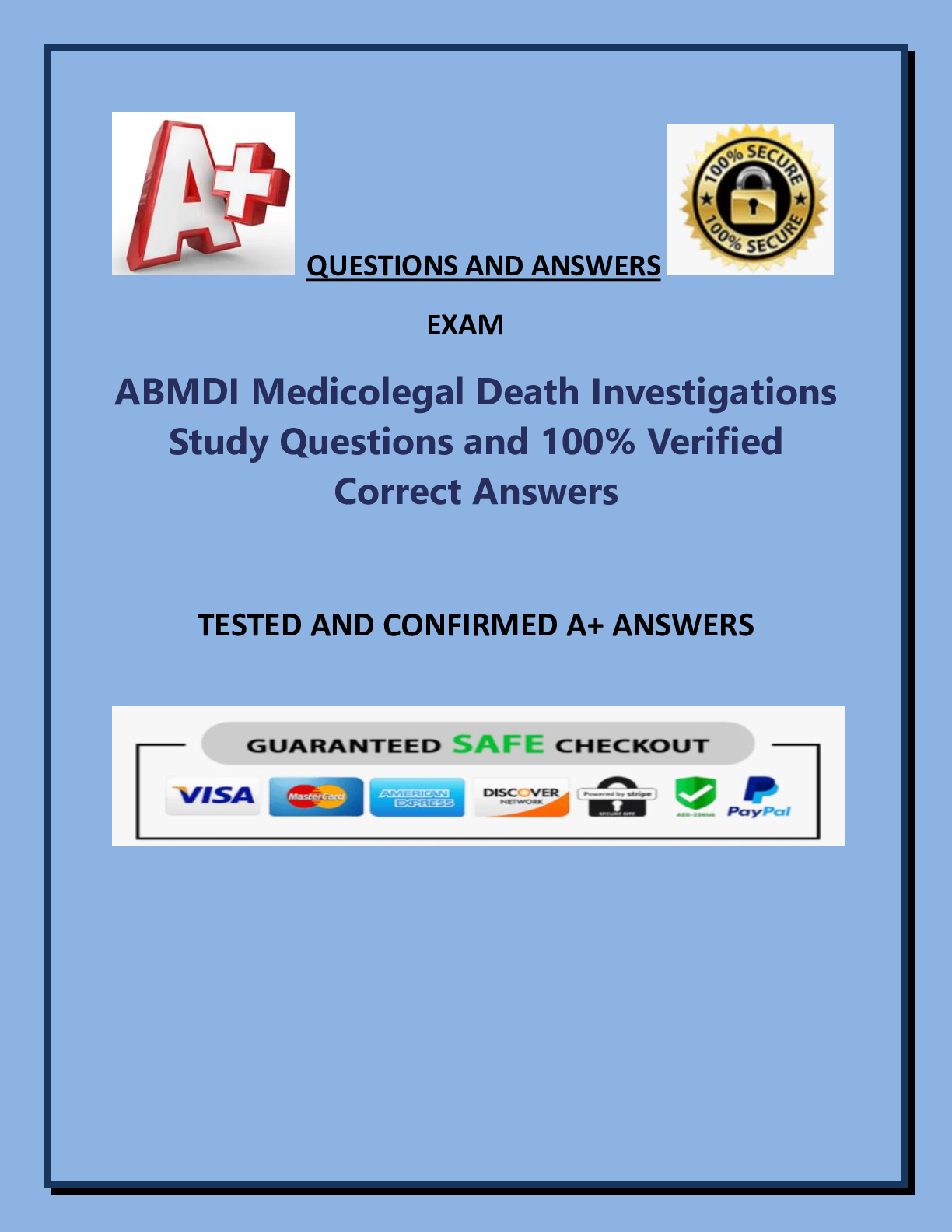*NURSING > A Level Question Paper > NR 325 Diabtes case study updated 2024 (All)
NR 325 Diabtes case study updated 2024
Document Content and Description Below
Complete the following using your own words. 1. Compare and contrast the two different types of diabetes. (5 points) Both types of diabetes are due to insulin deficiency, the differences in types co... mes from the kind of insulin deficiency. Both can be marked by polyuria, polydipsia, and polyphagia. Diagnostic studies include hemoglobin A1C, 2-hour oral glucose tolerance test. Type 1: autoimmune disorder, destruction of beta cells, begins at young age. Insulin is no longer produced or very little produced by pancreas and all cases require insulin therapy. Complication of type 1 is diabetic ketoacidosis, patient manifests with fruity acetone breath, ketones in urine, blood glucose greater than 250, Kussmaul respirations, and the 3 Ps (polyuria, polyphasia, polydipsia). Type 2: Insulin resistance is acquired; majority of cases is caused by diet. Pancreas creates insulin but does not function properly, insulin is not being used by body or in tissues. Insulin therapy is not required, diet and lifestyle modification is first, oral agents, and then insulin. Complication can be hyperosmolar hyperglycemic syndrome, manifests as blood glucose greater than 300, no ketones or acidosis present. 2. List 5 patient education topics important for a diabetic patient to know (diet, skin care, etc.). (10 points) Teach patients risk factors, such as obesity. Then provide nutritional goals for patients, with counseling, education, ongoing monitoring, dietician visits. Type 1: provide meal plans based on individual’s food intake and one that is balanced with insulin and exercise pattern. Type 2: emphasis weight loss, achieved a minimum of 130 g/day of carbohydrates, limiting cholesterol to less than 200 mg/day, and including 15-20% of calories from protein. Diabetics should avoid alcohol or use moderately because it can lead to hyperglycemia. Introduce MyPlate to help monitor intake. Teach patients about the importance of regular exercise, minimum of 150 minutes of week of aerobic exercise, but begin slowly after medical clearance. Make sure to monitor blood glucose before, during, and after exercise. Alwaysremember to bring a snack to prevent hypoglycemia. Teach patients to not exercise if blood glucose is over 300 mg/dL or if ketones are present in urine. Teach patients how to monitor blood glucose with a monitor. Most common way is to prick finger. First set up equipment, insert test strip into monitor, gather all supplies. Begin by cleaning test site with alcohol pad, wait for alcohol to completely dry. Then prick finger with agent (Usually only single use) and take test strip and absorb blood, and allow monitor to read. Instruct patient how to read and calibrate and the proper times to test. [Show More]
Last updated: 2 months ago
Preview 1 out of 4 pages
Instant download
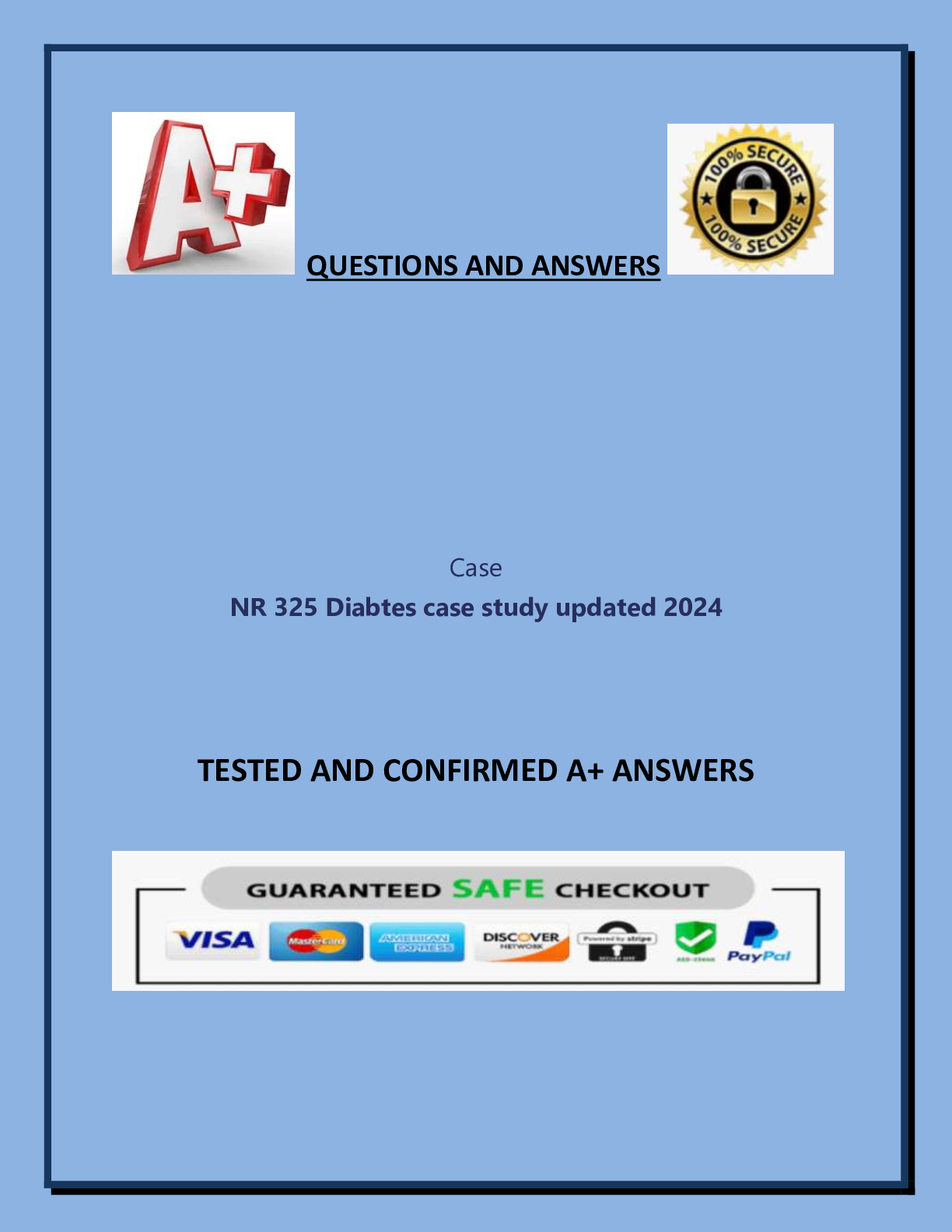
Buy this document to get the full access instantly
Instant Download Access after purchase
Add to cartInstant download
Reviews( 0 )
Document information
Connected school, study & course
About the document
Uploaded On
Mar 26, 2024
Number of pages
4
Written in
Additional information
This document has been written for:
Uploaded
Mar 26, 2024
Downloads
0
Views
21

